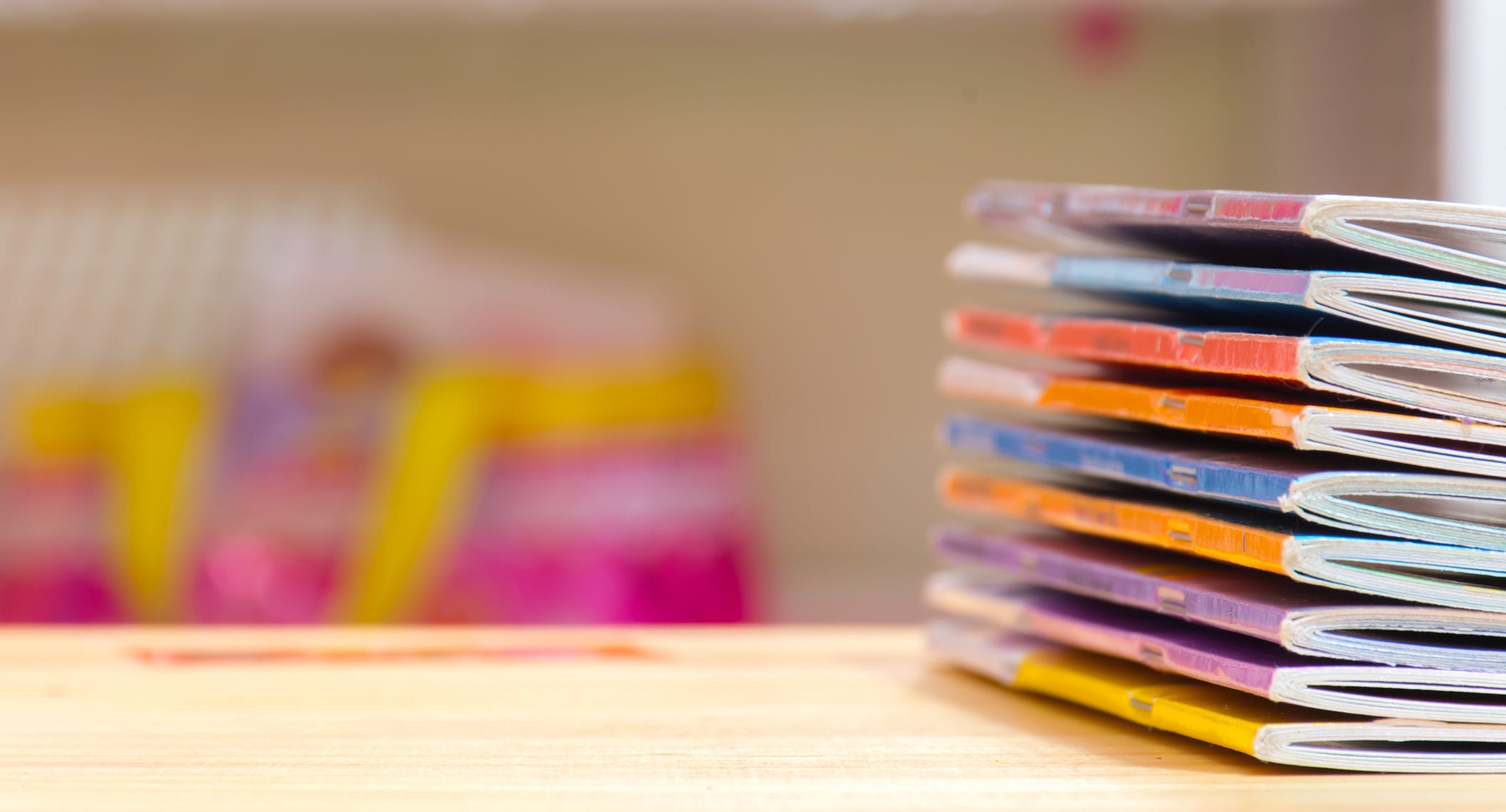

October 10, 2022
Many adults have fond memories of a desk full of schoolbooks and supplies along with a vivid memory of hauling the heavy tomes around the school, between classes, or in a backpack. But now more and more, students are provided with digital copies of textbooks along with other online materials. While the physical load of carrying books and supplies may have significantly reduced for the modern student, does this mean that print materials for students are outdated in our digital world?
Most educators and schools would respond with a resounding no. While some aspects of the educational world are better served through electronic mediums, the school printing is flourishing. School printing is more important than ever since both the customization options and the quality of printed materials greatly enhance a student’s experience and support the educators, leaders, and parents in schools.
One of the popular arguments against using printed products in school is that digitally created materials are the right pathway to conserve resources. And while excess paper usage could be a concern in some cases, the school print products that educators, students, and families use in schools are irreplaceable in many ways.
Some types of materials have been smartly transferred to a digital format, such as the seemingly endless parent forms that many schools rely on at the start of a new academic year. Moving these to an electronic format makes sense for many schools, since electronic forms can be consolidated into a much shorter, more agile form when completed digitally.
But physical printed products take centerstage in many academic settings because they provide a tangible medium that students respond to and educators can work with. And in many cases, school printing projects are utilized for long periods of time or designed to be used by many different people.
The convenience and extended usability of printed materials used in schools make them well worth their cost and use of materials. But the real story is that teachers, students, and even parents benefit from using customizable, quality printed materials that enhance and enrich the educational environment.
Teachers love printed materials that boost student engagement in the classroom, and many teachers rely on these physical materials all year long. And educators also like to keep themselves organized so they can be their best selves all year too. Whether teachers focus on their own needs, projects that will benefit their students, or student groups they lead outside of the school day, school printing is critical to educators.
Classrooms are not the only place where customized school printing is used on a regular basis. From school or front office letterhead and envelopes to providing formal business cards for many school employees, the front office of most schools relies on professionally printed products to keep the school running smoothly.
Dashing off a note to a teacher on a personalized, school-branded notepad is much quicker for busy staff members and many schools customize the notepads to reflect the typical communication needs of their office and leadership staff.
But regular communication with parents and staff, both digitally and in print, occurs throughout the entire school year as well. Customized school printing projects help leadership teams communicate effectively and efficiently with parents and student families from the first day of school until the final bell rings.
Not only can educators and school administrators benefit from using quality, custom school printing but students can also. Physical supplies to use in the classroom for learning are necessary for every age student. And when printed supplies are customized to fit the educational purpose, teachers can instead use those saved moments for instructional time while also minimizing the amount of paper or supplies they need in the first place.
One of the most popular school print materials educators require students to use is a notebook or journal. For younger students practicing their writing abilities or older students who are developing note-taking skills or keeping scientific journals, a customized notebook is something that teachers love to utilize.
The interior pages of a printed journal can be tailored to the specific curriculum or the teacher’s needs. Instead of always having to ask students to draw out charts, add the graphing paper to a notebook or draw lines to use with specific note-taking strategies, notebooks can be printed prepared to meet curriculum requirements. Teachers won’t have to add extra pages to an essential notebook or waste time creating those specialized pages during precious instructional time.
Printed materials in the classroom make learning easier, too. Accessing visual learning is important in the classroom so many educators utilize posters customized to their content, to present safety information in labs, or even to provide motivation and inspiration on their classroom walls. The printed medium is irreplaceable in supporting and encouraging students, building a learning environment that looks great and gives them the information they need every day.
Using printed materials in the classroom is not a thing of the past. In fact, smartly designed printed supplies are just as engaging (and sometimes more!) as digital ones. Modern education requires using the right tool for the best possible outcome and that includes using efficient and effective printed materials.
To inspire and engage your students, partner with a printing company like Publishing Xpress that can bring your creativity and your classroom to life and help you create school print materials. Take advantage of sweet perks like our design experts that help you craft an eye-catching cover for your custom journal or classroom notebook that you and your students will love.
Because our decades of experience with school printing can ensure that you have modern, effective learning tools that will look fantastic and save you time and money so you can focus on your instructional time.
© 2025 Publishing Xpress. All Rights Reserved.
Notifications